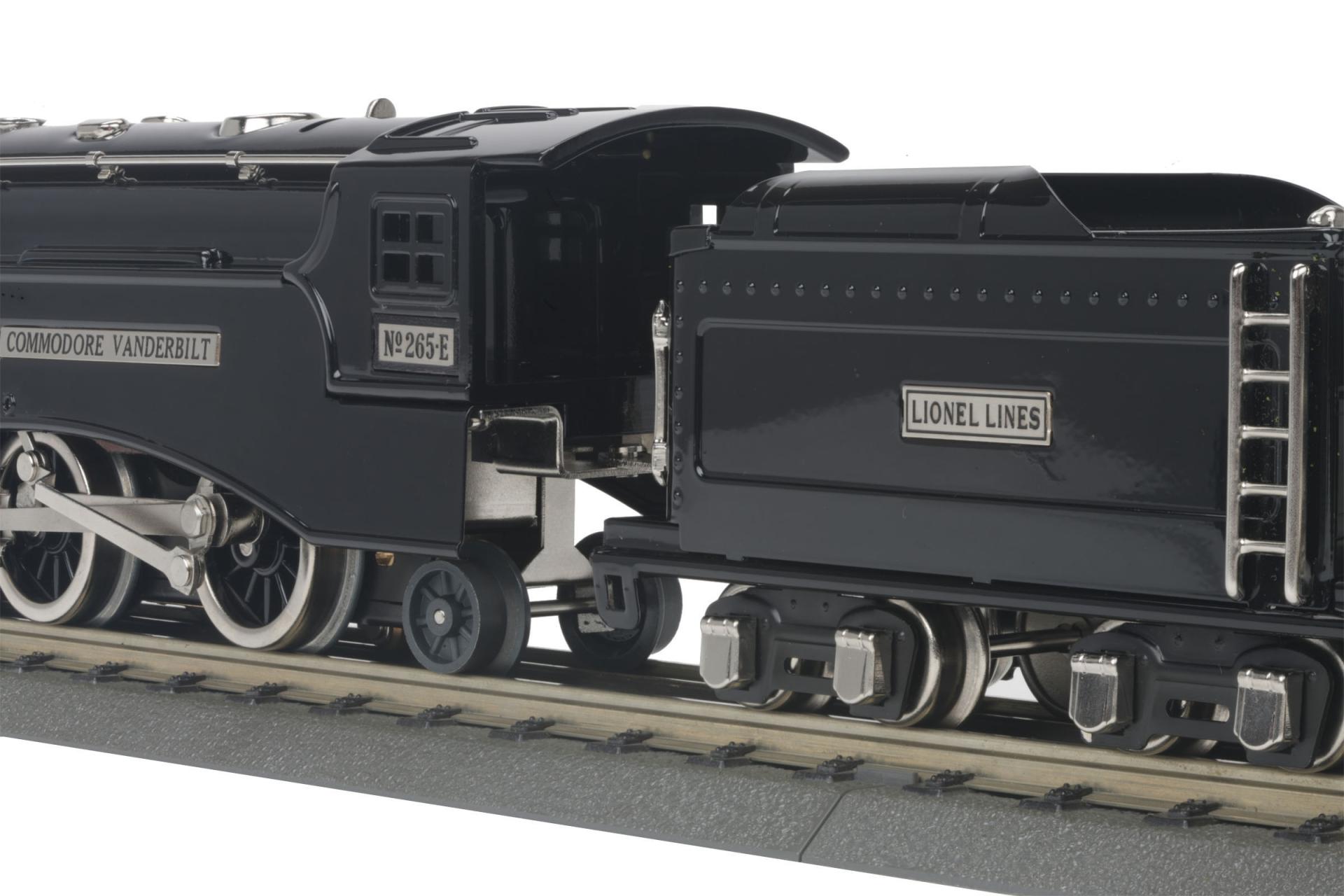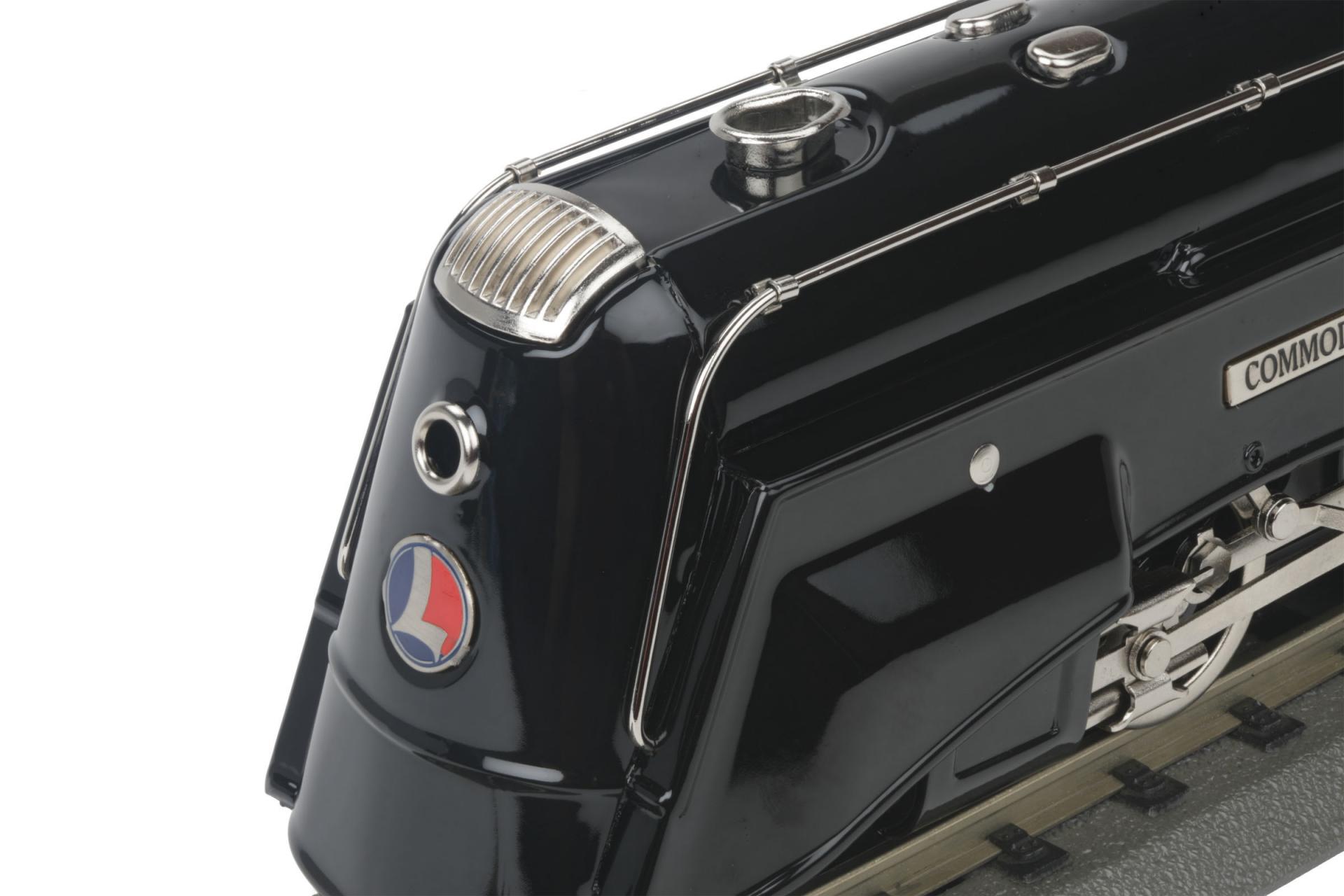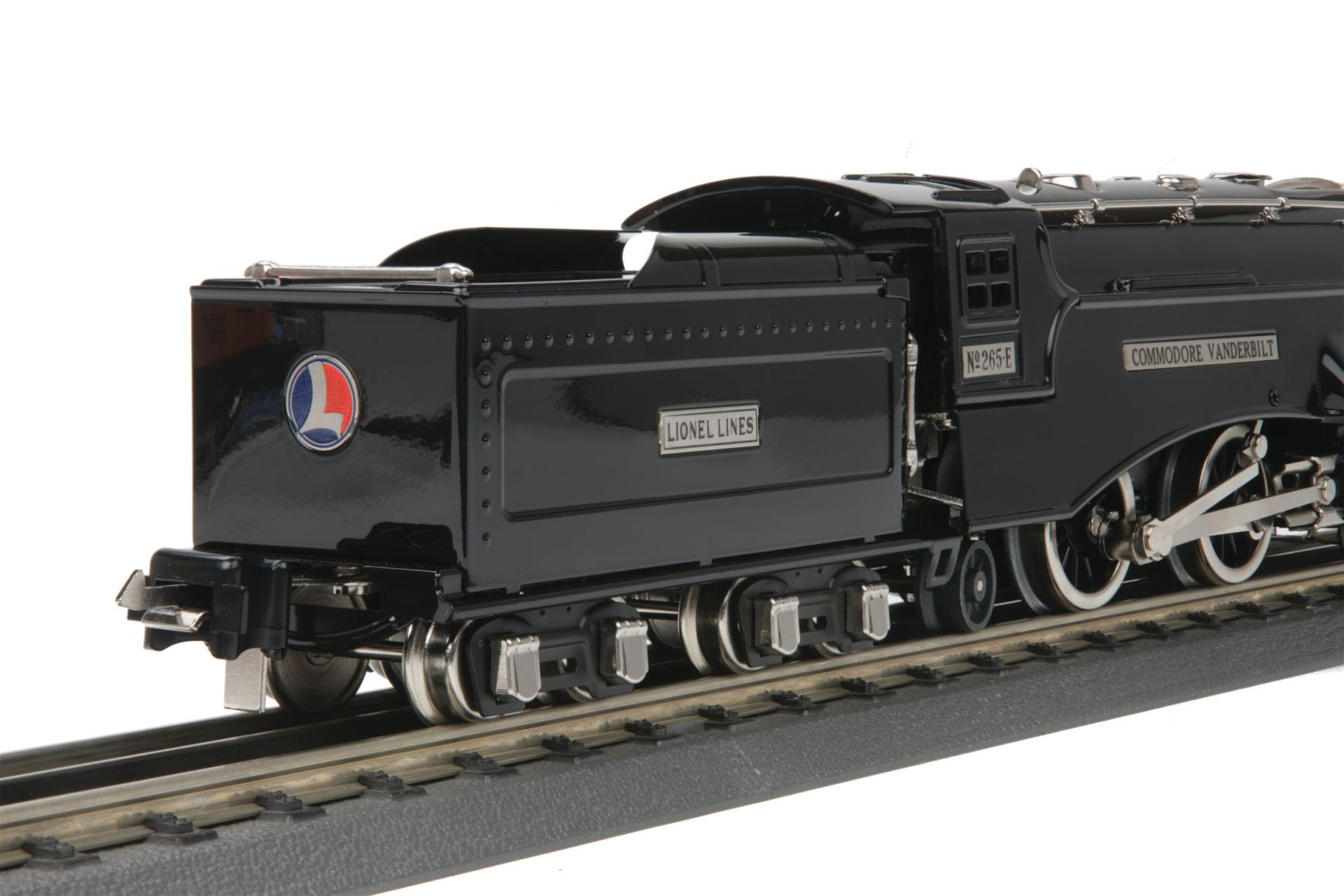




Lionel Lines O Gauge Lionel Corporation Tinplate 265E O Gauge Steam Engine (Traditional)
Overview
While the actual Commodore was never paired with streamlined stainless steel cars, Lionel created its own modern train by matching the 265E with chrome-plated articulated cars borrowed from its Flying Yankee model - oddly predicting the prototype Empire State Express, a 1941 NYC train that coupled a different streamlined Hudson with gleaming Budd-built passenger cars.
Only one other engine ever received Commodore-style streamlining: In 1936 a NYC Mohawk was streamlined to lead the Rexall Train. Proclaiming "The Depression is over!" and sporting car names that included Firstaid, Kantleek, and Ad-Vantages, the train barnstormed across 47 states to showcase the wonders of the United Drug Company's (Rexall) products. Immensely popular with the public, the blue-and-white train was immediately modeled by Lionel, cataloged as The Blue Streak from 1936-38. Imagine you're a child in the Depression-weary 1930s, when these Commodore Vanderbilt sets captured the excitement and optimism of the newest thing on American rails.
Today, the 265E returns to the Lionel Corporation Tinplate lineup in the same traditional configuration found in the original 1935 release. The smooth running Bild-A-Loco motor and mechanical E-Unit bring back memories of the buzz and smells of classic tinplate locomotives.
